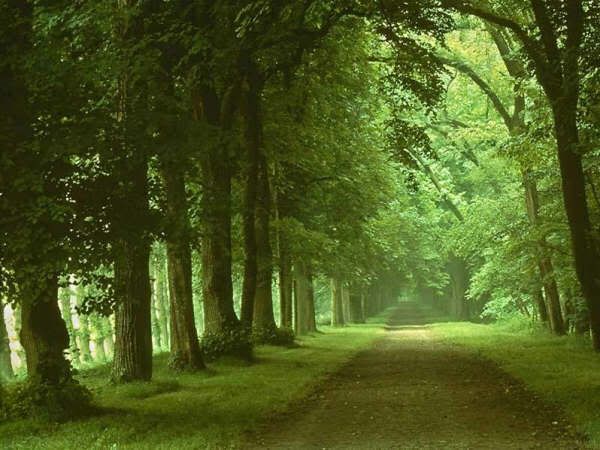
By Christina Laun
For those unfamiliar with the term, a learning style is a way in which an individual approaches learning. Many people understand material much better when it is presented in one format, for example a lab experiment, than when it is presented in another, like an audio presentation. Determining how you best learn and using materials that cater to this style can be a great way to make school and the entire process of acquiring new information easier and much more intuitive. Here are some great tools that you can use to cater to your individual learning style, no matter what that is.
Visual LearnersVisual learners learn through seeing and retain more information when it’s presented in the form of pictures, diagrams, visual presentations, textbooks, handouts and videos. Here are some Web resources that cater to those needs.
Mind MappingGet your ideas charted out in a visual format with these easy-to-use online brainstorming and organizational tools.
1. Bubbl.us: This flash-based mind mapping tools allows you to chart out your thoughts in a colorful format, share them with friends or embed them in blogs, websites and emails.
2. Free Mind: Mind mapping is easy and free with this Java tool. You’ll be able to manage your notes, lay out a paper and more completely online.
3. WiseMapping: You can access your mind maps from anywhere with this online tool. You can lay out words, pictures, ideas and more easily with WiseMapping.
4. Mindomo: Premium versions of this mind mapping tool come at a cost, but you can get access to the basic version for free. It allows you to add links, pictures and text to mind maps and share them over the net.
5. DeepMehta: This mind mapping tool is built around the idea of knowledge management and cognitive psychology. The open source tool allows sharing, emailing and even contains an embedded calendar.
6. MindMeister: Collaborate with your classmates on mind maps with this great online tool. The basic version is free and comes complete with the ability to create, share, import and export maps.
7. Mind42: The name of this tool represents "for two", and is indicative of the collaborative nature of this mapping tool. It can make it easy to keep track of your ideas, share them with friends and teachers and take them with you no matter where you are.
8. RecallPlus: Students can organize their notes, create flashcards, make use of 3D tools and more in this great mind mapping tool.
9. Mapul: This mind mapping program has basic and premium levels and allows users to map not only text but images and hyperlinks as well.
10. DebateMapper: If you’re struggling to understand a debate for your classes try creating a visual representation with this great mapping tool.
11. CMapTools: CMapTools is free for students to use and allows them to create and share all kinds of knowledge maps.
12. Thinkature: This site allows real-time collaboration on flow charts, diagrams and mind maps with features that include color organization and freehand drawing.
Charting and DiagramsLove to put information into charts and diagrams? These tools can help you do that.
13. Gliffy: Gliffy makes it easy to lay out ideas in flow charts and diagrams or to create floor plans and technical drawings to help you better visually understand information.
14. FlowChart: Create great flow charts for your classes using this online tool, which comes complete with drawing tools and objects as well as collaborative tools.
15. DrawAnywhere: This online program allows you to create diagrams and flow charts to represent all kinds of information. Best of all, you can log in from anywhere to get access to your diagrams.
16. AjaxSketch: This web-based drawing tool makes it easy to not only create flow charts and diagrams but to do freehand drawing as well and you can use it right from Firefox.
17. XML/SWF Charts: Those familiar with XML will be able to turn their data into colorful and useful charts with this downloadable tool.
18. yEd: Is a very powerful graph editor and creation tool that can be used to quickly and effectively generate drawings and to create easily read and laid out graphs and diagrams.
19. Graphviz: If you’ve got a lot of information about the structure of a website or anything else for that matter, this tool can help you to easy map it out into a graph or network.
20. Kivio: Kivio easy to use diagramming and flowcharting application that is part of the KOffice suite of programs. It comes with features to network diagrams, create organization charts, build flowcharts and more.
21. Project Draw: This program is a feature-rich web-based vector drawing application that will allow you to create diagrams and graphs of any kind of information as well as making a variety of other kinds of drawings.
22. Best 4C: This Web-based tool allows you to create and share charts from anywhere, making it easier than ever to diagram and draw your ideas.
23. LovelyCharts: Charts created through this tool really can be lovely with full color capabilities and loads of graphics.
Videos and PhotosFind everything you’ll need to learn through videos and pictures with these tools.
24. Google Video: Google Video is chock full of educational videos that can help explain everything from how to use Second Life to learn to explanations of psychological illnesses.
25. YouTube College: Sign up with your individual college and share videos with fellow students on this College-based version of YouTube. You can post your own visual notes and slides or look at those of others.
26. Picasa: Picasa is Google’s answer to photo sharing and you can upload images from an art history or anatomy class and study them from anywhere on the Web.
27. Flickr: This social networking and photo posting site can be a great way to share images from a class with your classmates or look for images to back up your notes.
28. Scooch: Scooch is a Web-based slide show program that will allow you to post photos and make slide shows that you can share with others over the Web.
29. Perseus Digital Library: In need of visual representations of manuscripts or sculptures from ancient Rome and Greece? You can find tens of thousands on this online library and database.
30. Teachertube: Teachertube is a great place to find instructional videos on just about everything. You can learn about the formation of mountains, world history and economics on this useful educational site.
31. Screencast-o-Matic: Create a video or photo of your screen with this helpful online tool. It can be a great way to remember how to do tasks on the computer or just to share images online.
32. Jing Project: This tool allows you to snap a photo of your desktop, make recordings of your activities and email or IM them to anyone.
33. Visuwords: Text dictionaries don’t always give visual learners the explanations they need. This dictionary is graphically based, making it easy to see what concepts or ideas are represented.
34. KartOO: Along those same lines, Kartoo is a visual search engine, giving you results laid out in a networked chart so it’s easy to see how topics relate.
Auditory LearnersAuditory learners do best in classes where listening is a main concern. These learners prefer verbal lectures and discussions. Auditory learners can get a leg up on their learning with these Web tools.
PodcastsGet all kind of supplementary education materials through these great podcast tools.
35. ProfCasts: Turn a PowerPoint presentation into a useful and portable podcast using this tool. It can be a great way to put class materials into a format you can bring with you anywhere.
36. Moodle: Post and share podcasts with an interactive online community using Moodle. You can not only post your own podcasts but get access to those of others that could provide educational value to you.
37. First Class: This collaboration and communication software offers a podcast publishing feature that can be great for educational purposes.
38. Podomatic: Find, share and publish your podcasts through Podomatic. You can search for existing podcasts that may cover topics you’re researching or that are relevant to your classes.
39. Podcast.net: Podcast.net provides a huge listing of podcasts from all over the Web. You’ll be able to find just about anything you need in an easy, audio format.
40. Educational Podcast Network: Narrow your search for podcasts down to those dedicated to education. You can learn about everything from math to dance right on your iPod.
41. PoducateMe: Don’t know the first thing about podcasting or how you can use it to make education a little easier? This site has all the information you need.
Presentation ToolsPut your notes or classroom information into an audio format with these handy apps.
42. Zoho Show: This great online tool allows you to create, edit and share presentations online making it easy to create
43. Eyespot: Users can create video mixes online and share them with others on this site and can even add effects to their graphics and music.
44. Thumbstacks: Thumbstacks allows users to create a web-based presentation or slide show and then share it with others.
45. SlideShare: This site takes more of a networked approach to creating presentations allowing you to post your presentations and browse those of other users.
46. Empressr: You can access your organized class materials or projects from anywhere with this tool and share them with friends and other classmates easily.
47. ThinkFree Show: If you are using PowerPoint to organize your class notes into a more visual and audio conducive format then you can take advantage of this site which makes it easy to take them to the Web.
48. AuthorStream: Another PowerPoint centered program, AuthorStream makes it simple to upload and share your presentations.
49. Toufee: If Flash is more your style you can use this online tool which gives you the tools needed to publish and play flash presentations and movies.
50. PhotoStory 3: Make your slides for class a little more interesting with this free program from Microsoft. You can add special effects or your own voice narration.
Audio ToolsListen and edit your sounds and music with these tools.
51. Jamglue: Mix and edit your audio clips with this online tool and when you’re done, share the finished product with other online visitors in a YouTube like format.
52. Audacity: One of the most popular free audio editors out there, audacity is multi-featured and allows users to record and edit in all kinds of formats.
53. Wave Surfer: Visualize and manipulate sounds with this free and customizable tool.
54. Looplab: Create and manipulate short loops and phrases with this great sound editing tool.
55. LAME: This open source tool makes it easy to encode and manipulate MP3s.
Text ReadersUnderstand material better when it’s read out loud? These Web tools can do that for you.
56. Adobe Acrobat Reader: You may not know this, but Adobe Reader has a feature that will allow the contents of the document to be read out loud. It can be a great way for the more auditorially inclined to get through readings.
57. Read Please: Cut and paste text or type it directly into the input form on this site and the program will read it to you. It can be a very useful tool for making sure essays and projects are written correctly.
58. Text Reader: Here you’ll find a tool that will give you audio for any text you feed into it.
59. Expressivo: This simple text reader will give you a variety of audio readings when you paste or type text into the entry form.
60. ItCanSay: This site has a great online text reader and can also give you some help pronouncing difficult words that aren’t said like they’re spelt.
61. Midomi: While not quite a text reader, this tool couldn’t be left out of this list. It’s a search engine that is based on sound rather than text. It can be a more intuitive way to find things if you respond better to sounds.
Audio Books
Those who have trouble retaining information from printed words can listen to their assigned reading instead with help from these sites.
62. LibriVox: This site provides free audiobooks for books in the public domain and has numerous titles. If you don’t find what you want, see if you can volunteer to create a recording of the book yourself.
63. History and Politics Out Loud: Here you’ll find speeches, historical information and more in an audio format, making it easier to take in and absorb for the auditory learner.
64. Audible: This subscription site allows visitors to download from thousands of audio books, both best sellers and classics making it easy to find what you need for class.
65. Project Gutenburg: Books that are no longer under copyright can be found here and there is a special section for audio books, both read by computers and by humans.
66. Free Books.org: If your class is reading an older text you may be able to find a free version of it to listen to on this site. It contains recordings of numerous out of copyright books.
Kinesthetic LearnersKinesthetic learners do best when they interact and touch things. They prefer a hands-on approach to learning and enjoy interacting with classroom materials and those around them. These tools can help keep these inquisitive learners busy.
Note Taking ToolsNo matter what you’re reading or watching you can make it more interactive by taking notes and these tools can help.
67. MyNoteIT: This great tool allows students to take and store their notes online, edit them with the help of classmates, look up words or terms you don’t understand and keep track of things you need to do.
68. Google Docs: With this program from Google you can take notes online, save them, and even send them to your peers for collaboration.
69. Notely: Keep your class notes, to-do lists and more organized and easy to access with this site.
70. NoteMesh: This site allows students from the same class to share notes by creating a wiki, making it easy and practical to work together.
71. Stu.dicio.us: Here, students are able to actively organize their class materials, take and store notes, share information and even link to online reference sites.
72. ShortText: This is a very simple tool for taking notes online. Simply enter your text, hit save, and you’ve got an online note you can revisit anytime you like.
73. YourDraft: Take notes with this rich text editor and share and save them online.
74. Stickkit: Get an intelligent sticky note with this great online program. It looks at the text on your notes and can recognize important dates, bookmarks, emails and more, organizing them for you and making it easy to stay on top of everything.
75. SyncNotes: If you use a PDA this can be a great way to keep your notes accessible on both your main computer and your portable device.
76. JotCloud: If you’re the type that loves to put sticky notes all over everything then you’ll enjoy this online note taking tool. It allows you to create clouds of stickies anywhere you need them.
77. NoteCentric: Store and share your classroom notes with this innovative site. It keeps your notes organized so you can reference them later and you can easily access it through a Facebook account.
Bookmarking
Mark references for later while you’re researching with these tools.
78. del.icio.us: This online tool makes it easy to mark sites you find interesting to use for later research or to send to friends and project partners.
79. Clipmarks: Don’t waste time searching through webpages you’ve already read to find the content you needed. Instead, clip it out this this tool. You can clip and email bits to yourself as you go making online research more active.
80. Wizlite: Don’t just save online material for later, highlight and tag it just like you would a real book with this great online tool.
81. i-Lighter: Help make online reading a little more hands on with this highlighting program. It allows you to mark parts of online text you found interesting or want to revisit later.
82. Web-Chops: Web-Chops allows you to clip out any part of a webpage then save and share these clips. It can be a great way to study for tests or prepare for papers in a more interactive fashion.
83. Furl: This social bookmarking site makes it easy to keep track of webpages you were interested in, share them with classmates and keep them organized for research.
84. Ma.gnolia: Search through sites others have bookmarked as interesting or use the site to highlight your own information from the Web and keep it in an easy to find place.
85. Blinklist: Make lists of sites that are relevant to whatever you’re working on with Blinklist. If you have a blog, you can even have the links appear automatically on it, making them super easy to access later.
Interaction
Get involved with the material with these online applications.
86. Flash Card Machine: This site allows you to create web-based flash cards to study the information you have for class using text and pictures.
87. Quia: With Quia, you’ll be able to create your own online quizzes and educational games to help you study your materials in a more interactive fashion.
88. Quizlet: Quizlet makes it easy to study things like vocabulary words with it’s online study tools. You can make quizzes, use your friend’s or browse existing flashcards on the site.
89. Pauker: This open source program will test your short and long term memory with a system that makes it easy to create and reuse flashcards and quizzes.
90. Learner.org Interactives: Need a more interactive explanation of a concept from class? You’ll find dozens of educational ones here that can help explain geology, chemistry, math and more.
Collaboration
These chatting and networking tools can make it easy to interact with classmates and friends.
91. Meebo: This website allows students to IM from anywhere, even computers without the software installations for major programs like AIM, Yahoo!, MSN and more.
92. Campfire: Here students can create password protected chat rooms to discuss their assignments, collaborate on projects or just chat. Best of all, you won’t need to install a thing.
93. CollegeRuled: Students can set up class message boards, create to-do lists and interact with classmates on this site.
94. Campusbug: This site provides a social learning network where students can interact and chat with each other while asking questions and getting answers about class materials.
95. Facebook: One of the most popular social network sites for students, Facebook provides a place where classmates can come together to chat about assignments, keep up with their lives and post links to sites, videos and photos.
96. Backpack: Backpack allows students to organize their notes, to-do lists and calendars while sharing information and working with classmates.
97. The Campus Center: Students can get together and network on this site and also have access to note taking and spreadsheet programs.
98. JotSpot: Working in a group just became easier with this online wiki tool that allows students to share notes, project ideas and information in an easily accessible format.
99. WebBrush: Collaborate in a fun and creative way with this tool that lets students send drawings and graphics to one another.
100. Grouptivity: This site allows students to use email to start a group discussion about class projects and assignments or just to complain about their professors.

100 Helpful Web Tools for Every Kind of Learner
 Located in the legendary Dakota on Central Park West and 72nd Street, this magnificent home is one of the largest in the building, and is rich in history and architectural grandeur. The 10-room residence has been beautifully renovated and restored, while the original 19th-Century details and appointments remain perfectly preserved.
Located in the legendary Dakota on Central Park West and 72nd Street, this magnificent home is one of the largest in the building, and is rich in history and architectural grandeur. The 10-room residence has been beautifully renovated and restored, while the original 19th-Century details and appointments remain perfectly preserved.


















